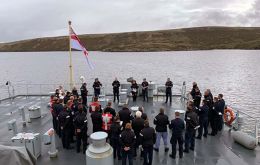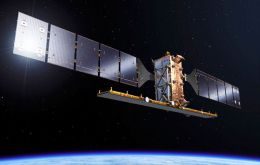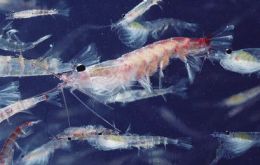MercoPress. South Atlantic News Agency
Tag: Southern Drake Passage
-
Thursday, January 16th 2020 - 08:55 UTC
HMS Scott honors HMS Antelope sunk in the Falklands' Sound

On a grey midsummer day in the Southern Hemisphere, the crew of HMS Scott pause for reflection over one of the Navy’s most hallowed sites. Ten meters below this spot, sitting upright, almost snapped in two, is the shattered hull of frigate HMS Antelope, torn apart by a series of explosions after bomb disposal experts triggered an unexploded device, in turn detonating the ship’s magazine.
-
Thursday, July 6th 2017 - 04:07 UTC
Antarctica Larsen C ice shelf about to spawn huge berg. In pieces it could reach as far as Falklands

Antarctica’s Larsen C ice shelf deep crack continues to cut across the ice, leaving a huge chunk clinging on. When it eventually gives way, one of the largest icebergs on record will be set adrift, and whole or in pieces, ocean currents could drag it north, even as far as the Falkland Islands. And if so it could pose a hazard for ships in Drake Passage.
-
Thursday, October 22nd 2015 - 19:05 UTC
Ushuaia cruise season takes off: 331 calls estimated in 2015/16

The 2015/16 cruise season has taken off in Argentine Tierra del Fuego with the arrival on Monday, of 'Ushuaia' and 90 passengers, one of the 331 calls which are estimated according to Ushuaia authorities. Gianfranco Guardamagna head of the Tierra del Fuego Tourism Institute recalled the significance of the cruise industry for Ushuaia, since the austral city “commands 95% of all international Antarctic tourism”.
-
Friday, September 27th 2013 - 21:33 UTC
South Georgia krill could suffer most global warming according to BAS

Modelling of the effects of sea temperature rises in the Southern Oceans indicates that krill in the seas around South Georgia may be the hardest hit of the region by the effects of global warming, reports the August edition of the South Georgia Newsletter.
-
Monday, August 26th 2013 - 08:25 UTC
Rising sea temperature will reduce krill growth habitat in Antarctica

Antarctic krill are usually less than 6 cm in length, but their size belies the major role they play in sustaining much of the life in the Southern Ocean. They are the primary food source for many species of whales, seals, penguins and fish.
